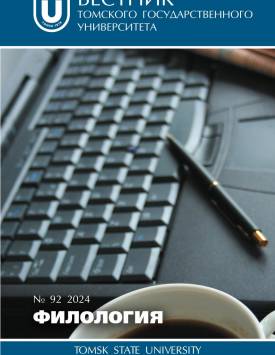A Hungarian look at the Russian classics
The study focuses on a collection of articles by Agnes Dukkon, which offers a comprehensive and insightful look at nineteenth-century Russian literature through a dialogue of diverse works. Professor Dukkon is the renowned author of several monographs introducing the Golden Age of Russian literature to Hungarian readers, and the editor of a large-scale four-volume work on the Hungarian perception of Russian writers. In her new book, Agnes Dukkon invites readers to take a journey into the history of spiritual culture, introducing them to the analysis of specific texts, as well as to the cultural, social and artistic layers of the era under study. The concept of "terrible beauty" included by the author in the title of the book from Lermontov's poetic story "Ishmael Bey" reflects the aesthetic and ethical dilemmas, such as the conflict between Beauty and Good in the Russian literary canon. The first two, more voluminous parts of the book are devoted to aesthetic, genre, philological and comparative studies, while the third part provides historical-scientific and receptive analyses. With an excellent command of the technique of refined analysis and consistent application of the theoretical principles stated in the "Introduction", the author faithfully conveys the philosophical, thematic and motive diversity of the literature of the Russian Golden Age. An important basis of the analysis is the mapping of multicultural touchpoints and intermediate interfaces, which allowed the deep semantic layers and internal motivations of the presented literary works to be revealed. In her study, Agnes Dukkon highlights key aspects of nineteenth-century Russian literature. She examines in detail Russian Romanticism and its characteristics, the influence of German transcendental idealism on Russian literature, with emphasis on the interaction of Schelling's ideas, chthonic motifs in Gogol's early works, the motif of the double (Doppelganger) in the works of Gogol, Dostoevsky and other authors, as well as psychoanalytical aspects of Dostoevsky's work. Of particular note is the author's awareness of Russian and Hungarian literature, art, and their perceptions, which creates a lively dialogue between the literary traditions of the two nations. In the last part of the book, the author introduces four prominent Hungarian scholars and translators who mediated between Russian cultural values and Hungarian society. Agnes Dukkon's book offers the reader incredibly rich material on nineteenth-century Russian literature, as well as introduces the works of Hungarian scholars of Russian and Slavic literature on this era. It can be used perfectly well as university teaching material, but the author's intention is to appeal to a wider audience interested in classical literature. The author declares no conflicts of interests.
Keywords
Golden Age, Romanticism, chthonic motifs, double, psychoanalysis, transcendental idealism, otherworld, hagiography, intercultural mediationAuthors
| Name | Organization | |
| Racz Ildiko Maria | Eotvos Lorand University | ildiko@raczt.hu |
References

A Hungarian look at the Russian classics | Vestnik Tomskogo gosudarstvennogo universiteta. Filologiya – Tomsk State University Journal of Philology. 2024. № 92. DOI: 10.17223/19986645/92/15
